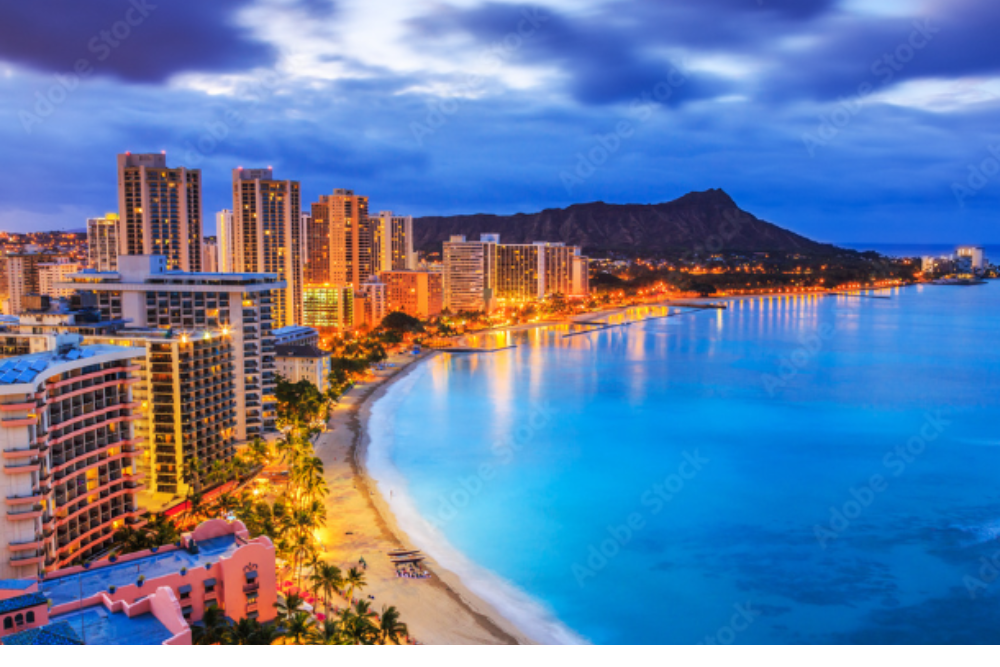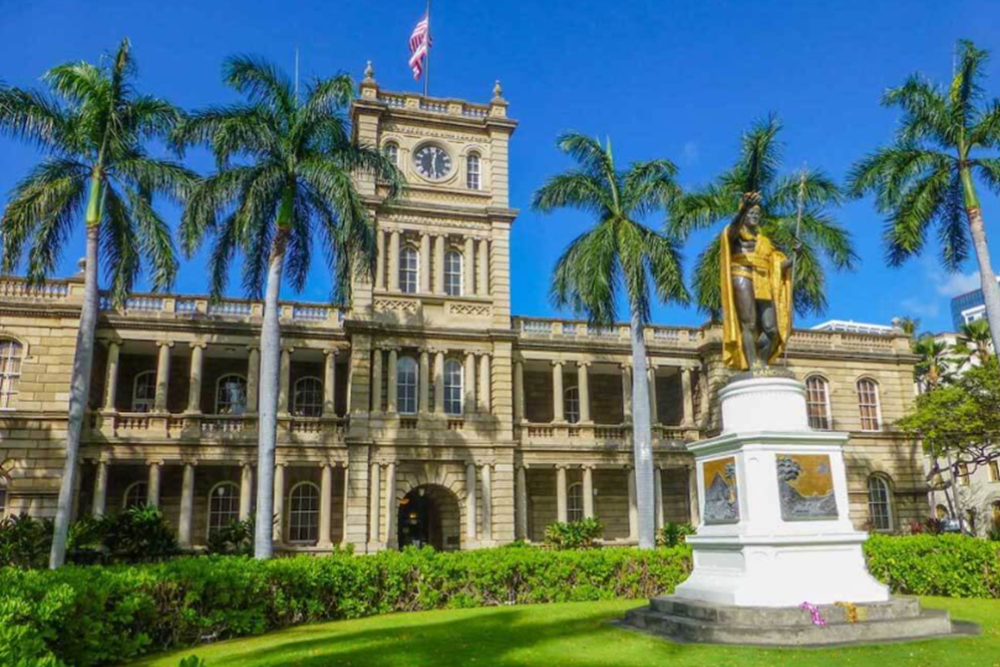Introduction
Hawaii is a U.S. state situated in the Pacific Sea, comprising of an archipelago of eight principal islands, including Oahu, Maui, Kauai, and the Huge Island (Hawaii Island). Known for its dazzling regular excellence, Hawaii highlights volcanic scenes, lavish tropical rainforests, unblemished sea shores, and rich marine life. It is additionally home to two public parks, including the well-known Hawaii Volcanoes Public Park. Hawaii has an interesting society molded by Local Hawaiian practices, Asian and Polynesian impacts, and American history. Famous attractions incorporate Waikiki Ocean side, Pearl Harbor, and the grand Na Pail Coast. It’s a significant traveler objective for surfing, climbing, and social encounters.
Oahu’s Iconic Landmarks
- Waikiki Beach: A worldwide image of Hawaii, Waikiki Ocean side in Honolulu is prestigious for its brilliant sands, completely clear waters, and dynamic nightlife. The ocean side is great for surfing, sunbathing, and getting a charge out of different water exercises. Close by, investigate notable tourist spots like the Duke Kahanamoku Sculpture and the Imperial Hawaiian Inn.
- Pearl Harbor: A must-visit verifiable site, Pearl Harbor is home to the USS Arizona Remembrance and the Pacific Flying Historical center. The remembrance praises the people who lost their lives during the assault on December 7, 1941, and gives a powerful knowledge into The Second Great War history.
Maui’s Scenic Wonders
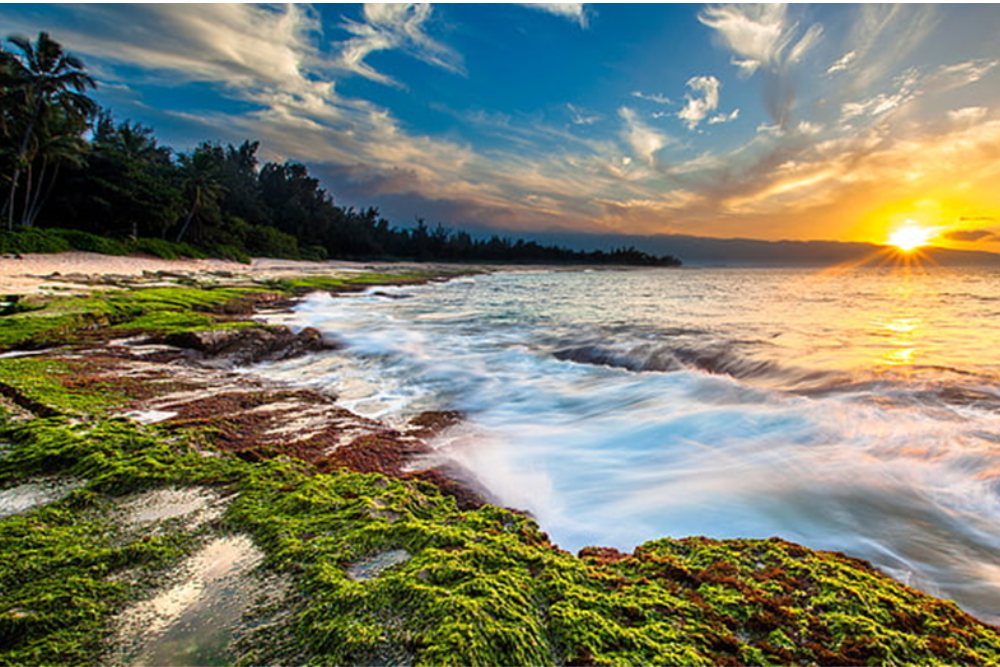
- Haleakalā National Park: Overwhelmed by the gigantic Haleakalā Well of lava, this park is eminent for its amazing dawn sees. The fruitless, lunar scene of the hole diverges from the rich environmental factors. The recreation area offers climbing trails, for example, the Sliding Sands Trail, which grandstands the volcanic landscape.
- Road to Hana: This renowned drive takes you through Maui’s lavish rainforests, past flowing cascades, and along rough shorelines. Key stops incorporate the dark sand ocean side at Waianapanapa State Park, the enchanting town of Hana, and the Seven Hallowed Pools at Ohe’o Gorge.
Big Island’s Volcanic Majesty
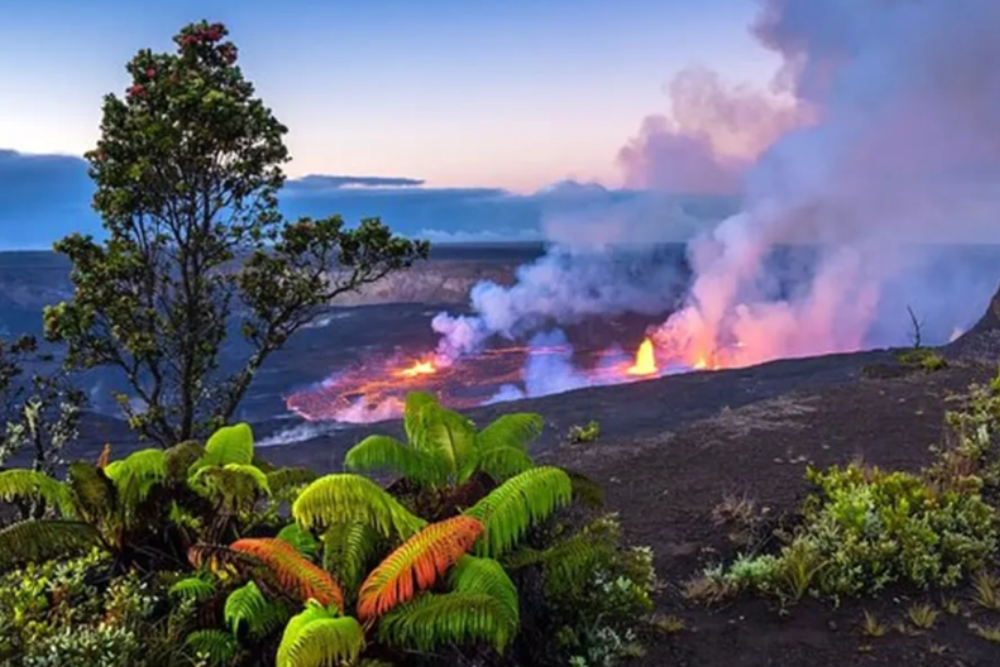
- Hawai’i Volcanoes National Park: Home to the world’s most dynamic volcanoes, Kīlauea and Mauna Loa, this park offers an emotional volcanic scene. Guests can investigate magma tubes, steam vents, and notice continuous volcanic action. The recreation area’s different environments range from tropical rainforests to parched magma fields.
- Akaka Falls State Park: Situated close to Hilo, this park highlights two dazzling cascades — Akaka falls, plunging 442 feet, and Kahuna Falls. The recreation area’s short climbing trail winds through lavish tropical vegetation, giving awesome perspectives on the falls and encompassing landscape.
Kauai’s Natural Beauty

- Nā Pali Coast: This tough and distant shoreline is open by boat, helicopter, or a demanding climb along the Kalalau Trail. The sensational bluffs, lavish valleys, and cascades make the Nā Pali Coast quite possibly of Hawaii’s most grand and attractive region.
- Waimea Canyon: Frequently alluded to as the “Stupendous Ravine of the Pacific,” Waimea Gorge offers striking red and orange stone developments. Climbing trails, for example, the Ravine Trail give shocking perspectives and chances to investigate the gorge’s novel geography and verdure.
Lanai’s Secluded Charms
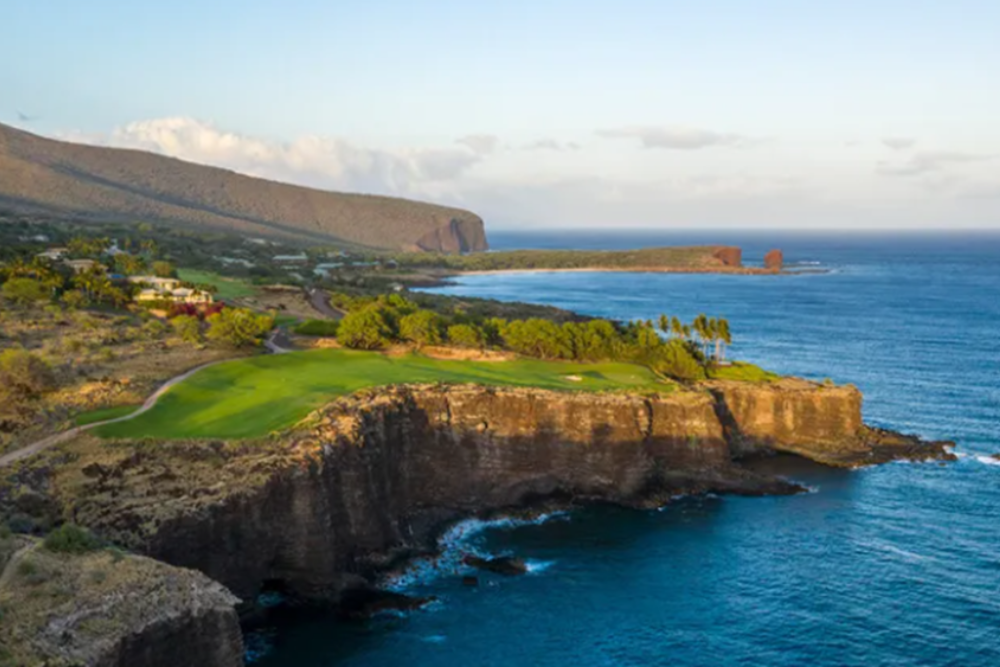
- Shipwreck Beach: Situated on Lanai’s southwestern coast, Wreck Ocean side is named for the remaining parts of a wreck that can in any case be seen on the shore. The ocean side offers an interesting, serene setting with clearing sea sees and is great for a tranquil break.
- Garden of the Gods: This powerful scene on Lanai highlights rock developments formed by wind and disintegration. The infertile, rough territory stands out from the encompassing plant life, establishing a dreamlike and naturally attractive climate.
Molokai’s Cultural Heritage
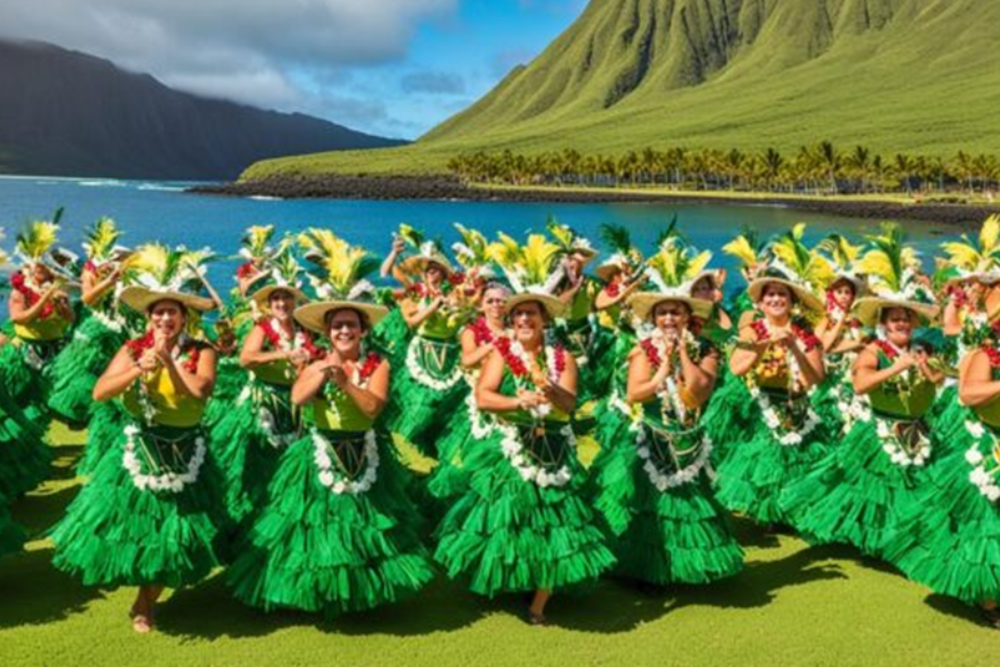
- Kalaupapa National Historical Park: This far off promontory was once an untouchable settlement and is presently a position of reflection and recognition. The recreation area offers directed visits that give bits of knowledge into the existences of the people who lived there and crafted by Father Damien, a critical figure in the state’s set of experiences.
- Molokai’s Beaches and Trails: Molokai is known for its pristine excellence and bona fide Hawaiian culture. Investigate unblemished sea shores like Papohaku Ocean side and climb trails, for example, the Kalaupapa Trail, which offers staggering beach front perspectives and admittance to memorable locales.
Honolulu’s Urban
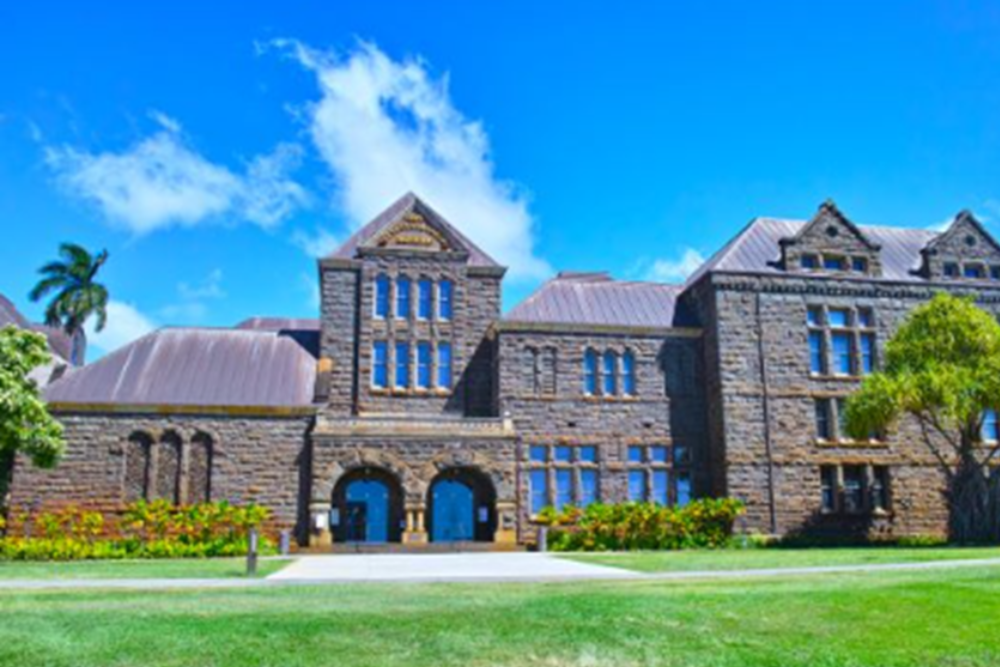
- Iolani Palace: The main imperial royal residence in the US, Iolani Royal residence offers a brief look into Hawaii’s monarchical past. The castle highlights lavish insides and memorable antiques that mirror the glory of the Hawaiian government.
- Honolulu Museum of Art: This historical center houses a different assortment of workmanship, including Hawaiian, Asian, and Western pieces. A social center offers shows, instructive projects, and a wonderful nursery.
Kona’s Coffee and Coastline
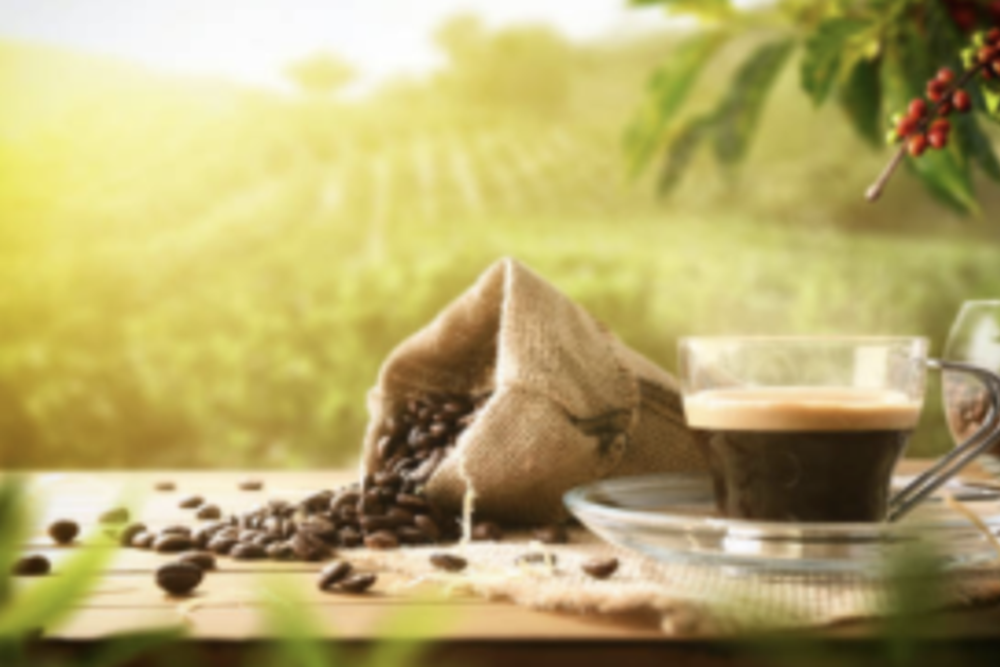
- Kona Coffee Farms: Kona is renowned for its espresso, and a visit to a neighborhood espresso ranch gives knowledge into the creation interaction. Visits frequently incorporate tastings and clarifications of the remarkable developing circumstances that add to Kona’s famous espresso.
- Kailua-Kona: This energetic town offers a blend of memorable locales, shopping, and feasting. Appreciate waterfront feasting, visit the Hulihe’e Royal residence, or investigate close by sea shores like Wizardry Sands Ocean side for swimming and swimming.
Hilo Farmers Market:

- A peaceful Japanese-style garden in Hilo, Liliʻuokalani Nurseries highlights serene lakes, manicured scenes, and customary Japanese design. It’s a quiet spot for a comfortable walk and reflection.
- Hilo Ranchers Market: This clamoring market offers an assortment of nearby produce, specialties, and food slows down. It’s an amazing spot to test new tropical natural products, neighborhood treats, and remarkable Hawaiian artworks.
Cultural Experiences and Cuisine
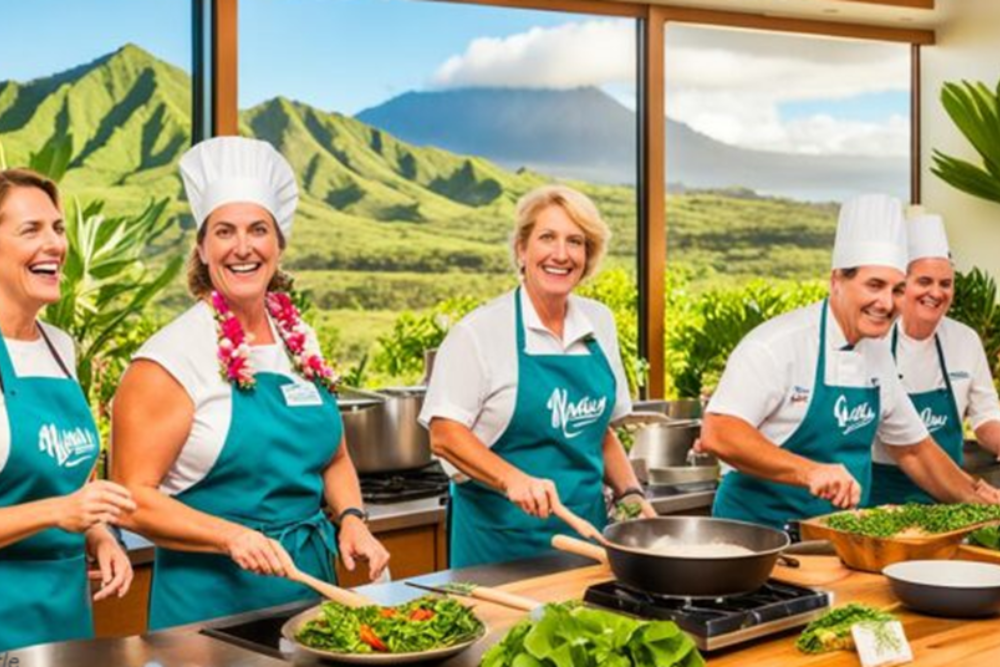
- Luau: Going to a customary Hawaiian luau is an unquestionable necessity for encountering Hawaiian culture. These bubbly social occasions incorporate Hawaiian music, hula moving, and a blowout of neighborhood dishes, for example, kalua pig, poi, and tropical organic products.
- Local Cuisine: Hawaii’s culinary scene mirrors its assorted social impacts. Attempt neighborhood fortes like jab (crude fish salad), crazy moco (rice, burger patty, egg, and sauce), and malasadas (Portuguese doughnuts). Investigate food trucks and neighborhood cafés to encounter Hawaii’s energetic food culture.
Dos and Don’ts in Hawaii
While visiting Hawaii, regarding neighborhood customs, nature, and customs is significant. Here are a few vital rules and regulations:
Dos:
- Respect Local Culture: Get familiar with a couple of Hawaiian words like “Salud” (hi/farewell) and “Mahalo” (thank you) to show regard.
- Embrace Environmental Responsibility: Follow “Leave No Follow” standards, take your rubbish, and safeguard the regular excellence of sea shores, parks, and untamed life.
Don’ts:
- Don’t Touch or Disturb Wildlife: Regard natural life, for example, ocean turtles, dolphins, and priest seals by maintaining a protected separation.
- Don’t Take Anything from Nature: Try not to eliminate igneous rock, coral, or sand, as this is both unlawful and considered ill-bred to Hawaiian convictions.
Best time to reach in Hawaii
The best opportunity to visit Hawaii relies upon what you’re searching for in your outing:
1. Weather:
- Spring (April to June): For the most part warm and wonderful, with lower stickiness and less travelers contrasted with summer. Ideal for outside exercises and touring.
- Fall (September to November): Like spring, with warm temperatures and less jam-packed places of interest. This is likewise a great time for lower airfare and convenience rates.
2. Crowds and Costs:
- Summer (June to August): Pinnacle traveler season with greater costs and more packed attractions. In the event that you appreciate dynamic exercises and wouldn’t fret the groups, this can be a good chance to visit.
- Winter (December to spring): Another bustling season, particularly around special times of year. Costs can be higher, yet it’s an extraordinary time for whale watching and riding on the north shore. The weather conditions is gentle, however it very well may be wetter on certain islands.
3. Events and Activities:
- Celebrations: Every island has its own celebrations and occasions. For instance, the Merrie Ruler Celebration in Hilo happens in April and observes Hawaiian culture through hula and customary expressions.
- Whale Watching: December to April is the ideal time for whale watching, especially around Maui.
Cultural Experiences and Cuisine
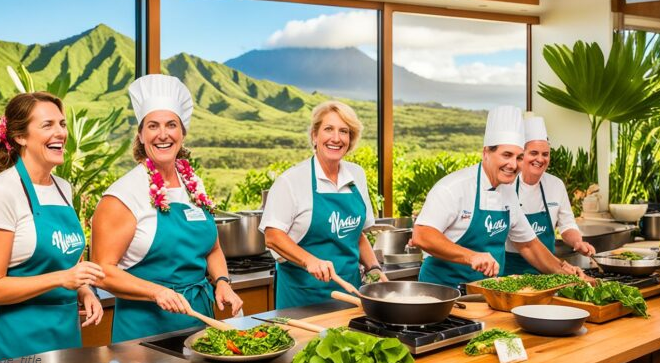
- Luau: Going to a customary Hawaiian luau is an unquestionable necessity for encountering Hawaiian culture. These bubbly social occasions incorporate Hawaiian music, hula moving, and a blowout of neighborhood dishes, for example, kalua pig, poi, and tropical organic products.
- Local Cuisine: Hawaii’s culinary scene mirrors its assorted social impacts. Attempt neighborhood fortes like jab (crude fish salad), crazy moco (rice, burger patty, egg, and sauce), and malasadas (Portuguese doughnuts). Investigate food trucks and neighborhood cafés to encounter Hawaii’s energetic food culture.
Dos and Don’ts in Hawaii
While visiting Hawaii, regarding neighborhood customs, nature, and customs is significant. Here are a few vital rules and regulations:
Dos:
- Respect Local Culture: Get familiar with a couple of Hawaiian words like “Salud” (hi/farewell) and “Mahalo” (thank you) to show regard.
- Embrace Environmental Responsibility: Follow “Leave No Follow” standards, take your rubbish, and safeguard the regular excellence of sea shores, parks, and untamed life.
- Be Mindful of Sacred Sites: Hawaii has numerous socially critical areas, for example, heiaus (sanctuaries) and graveyard. Show love and abstain from intruding.
Don’ts:
- Don’t Touch or Disturb Wildlife: Regard natural life, for example, ocean turtles, dolphins, and priest seals by maintaining a protected separation.
- Don’t Take Anything from Nature: Try not to eliminate igneous rock, coral, or sand, as this is both unlawful and considered ill-bred to Hawaiian convictions.
Best time to reach in Hawaii
The best opportunity to visit Hawaii relies upon what you’re searching for in your outing:
1. Weather:
- Spring (April to June): For the most part warm and wonderful, with lower stickiness and less travelers contrasted with summer. Ideal for outside exercises and touring.
- Fall (September to November): Like spring, with warm temperatures and less jam-packed places of interest. This is likewise a great time for lower airfare and convenience rates.
2. Crowds and Costs:
- Summer (June to August): Pinnacle traveler season with greater costs and more packed attractions. In the event that you appreciate dynamic exercises and wouldn’t fret the groups, this can be a good chance to visit.
- Winter (December to spring): Another bustling season, particularly around special times of year. Costs can be higher, yet it’s an extraordinary time for whale watching and riding on the north shore. The weather conditions is gentle, however it very well may be wetter on certain islands.
3. Events and Activities:
- Celebrations: Every island has its own celebrations and occasions. For instance, the Merrie Ruler Celebration in Hilo happens in April and observes Hawaiian culture through hula and customary expressions.
- Whale Watching: December to April is the ideal time for whale watching, especially around Maui.



